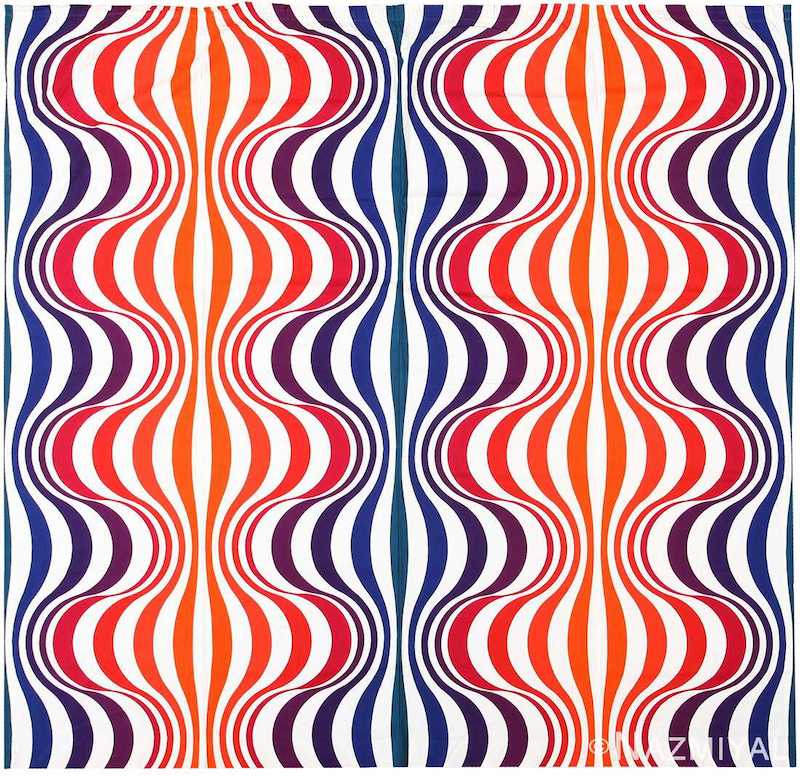All about Danish Modern Furniture Design
What Is Danish Modern Design?
Danish Modern Design refers to a design movement that emerged in Denmark during the mid-20th century, particularly in the 1940s to the 1960s. It is characterized by its minimalist aesthetic, functional approach, and craftsmanship. Danish Modern Design gained international recognition and popularity for its innovative and influential designs, which had a significant impact on the fields of furniture, architecture, industrial design, and interior design.
Key features of Danish Modern Design include:
- Simplicity: Danish Modern Design emphasizes clean lines and simplicity in form. It seeks to eliminate unnecessary ornamentation and decoration, focusing on the essential elements of design.
- Functionality: Functionality is a central aspect of Danish Modern Design. The furniture and objects are designed with a practical purpose in mind, ensuring that they serve their intended function efficiently.
- Natural materials: Danish Modern designers often favored natural materials such as teak, rosewood, oak, and beech. These materials were valued for their durability, beauty, and warmth. The use of natural materials also aimed to bring nature indoors and create a harmonious living environment.
- Organic shapes: Danish Modern Design often incorporates organic, flowing shapes inspired by nature. Designers sought to create furniture and objects that blended harmoniously with their surroundings.
- Craftsmanship: Danish Modern Design places a strong emphasis on high-quality craftsmanship. The furniture and objects are meticulously crafted, with attention to detail and an appreciation for traditional woodworking techniques.
- Some notable Danish Modern designers include Hans Wegner, Arne Jacobsen, Finn Juhl, Børge Mogensen, and Poul Kjærholm. Their iconic designs, such as the Wishbone Chair by Hans Wegner or the Egg Chair by Arne Jacobsen, have become synonymous with Danish Modern Design and continue to be highly sought after by collectors and design enthusiasts worldwide.
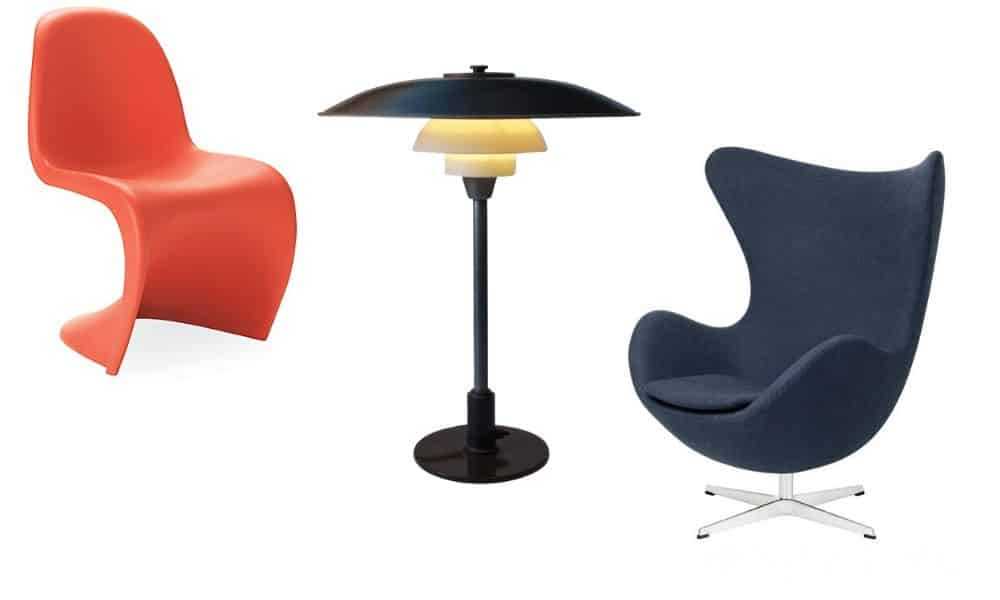
Danish Modern Design Furniture
Overall, Danish Modern Design represents a fusion of form and function, combining simplicity, craftsmanship, and natural materials to create timeless and elegant designs.
Danish Modern Furniture
Danish modern furniture is a style of furniture that is associated with mid century modern design and the Bauhaus movement. It is notoriously clean, streamlined, and mod. Let’s explore where this design came from and how to recognize it.
Danish Modern Furniture refers to furniture pieces that were designed and produced during the Danish Modern Design movement. It embodies the principles and characteristics of Danish Modern Design, which emerged in Denmark during the mid-20th century and had a significant impact on furniture design worldwide.
Key features of Danish Modern Furniture include:
- Minimalist Design: Danish Modern Furniture is known for its clean lines, simplicity, and minimalist aesthetic. It avoids excessive ornamentation or decoration, focusing on the essential elements of design.
- Organic Forms: Danish Modern Furniture often features organic and sculptural forms inspired by nature. The designs incorporate gentle curves, smooth contours, and flowing lines, creating an overall sense of harmony and balance.
- Quality Materials: Danish Modern Furniture typically utilizes high-quality natural materials such as teak, rosewood, oak, beech, and walnut. These materials were valued for their durability, beauty, and warmth. The use of natural materials was also seen as a way to bring the outdoors inside and create a connection with nature.
- Functionalism: Functionality is a crucial aspect of Danish Modern Furniture. The pieces are designed to be practical and user-friendly while maintaining an elegant and timeless aesthetic. They often feature clever storage solutions and modular elements to maximize utility.
- Craftsmanship: Danish Modern Furniture is renowned for its exceptional craftsmanship. The pieces are meticulously crafted with attention to detail, precision joinery, and an emphasis on traditional woodworking techniques. The focus on craftsmanship ensures the longevity and quality of the furniture.
Some iconic examples of Danish Modern Furniture include the Egg Chair and Swan Chair by Arne Jacobsen, the Wishbone Chair by Hans Wegner, the PK22 Chair by Poul Kjærholm, and the CH24 Chair (also known as the Wishbone Chair) by Hans J. Wegner. These designs have become iconic representations of Danish Modern Furniture and are still highly regarded and sought after today.
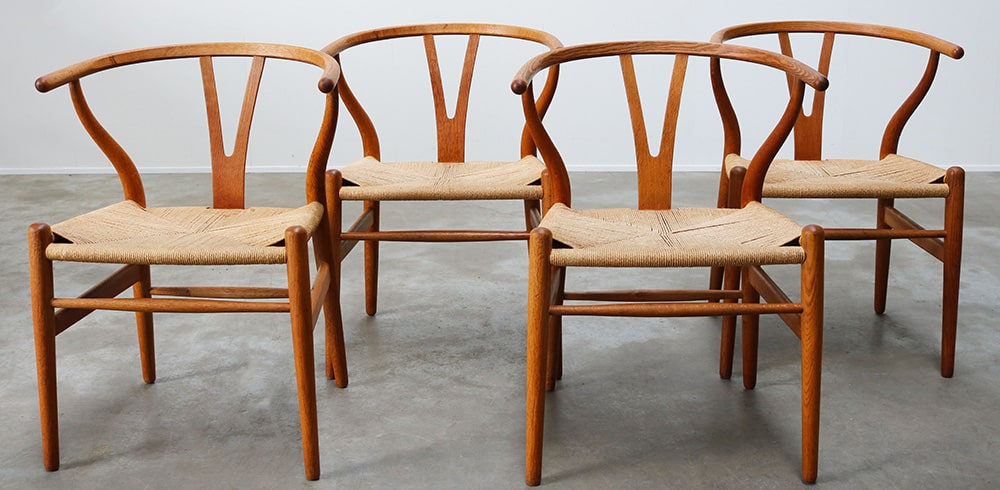
4 Hans Wegner CH24 Wishbone Chairs
Overall, Danish Modern Furniture represents a blend of form, function, and craftsmanship, with a timeless and elegant appeal. It continues to be celebrated for its enduring design principles and the contributions it made to the field of furniture design.
Origins and History of Danish Modern Furniture
As the name suggests, the Danish modern style originated in Denmark. Thought to be pioneered by Kaare Klint in the 1920s, the principles of Bauhaus design inspired the clean lines of the designs. Klint was the head of the architecture school at the Royal Danish Academy of Fine Arts. He taught his students to take an analytical approach to furniture creation and adapt their designs to needs of the modern day. The designs evolved over the decades and, during the postwar era, became more and more utilitarian. Danish modern designers focused on creating designs that were affordable, functional, yet still elegant.
Originally, Danish modern minimalist furniture was handcrafted by the artisans who designed it. During World War II and beyond, when the designers realized the demand for low cost furniture, production switched to mass machine-making, which was more cost effective. WWII also created a scarcity of some materials. This meant that many of the pieces produced during the postwar era were made out of plywood.
Danish modern furniture was wildly popular in America beginning in the 1950’s and lasting through the mid 1960’s. Manufacturers in America obtained licences to manufacture these pieces nationally, and sales soared. However, in the later 1960’s, tastes shifted to prefer molded plastic and wood-grained Formica materials, which were also cheaper to produce.
Notable Contributors to Danish Modern Design
Over the years, there were many contributors to the evolution of Danish modern design. Furthermore, when licenses were given to other countries to produce the furniture there, the styles changed a bit. However, there are a few notable names who are associated with making the style what it is.
After the style’s pioneer, Kaare Klint, came Poul Henningsen. Henningsen was an architect whose work embodied functionalism. His design contribution to the movement was not in furniture, but in lighting. His “PH Lamp” is now iconic and easily recognizable. Many lamps and lighting fixtures have gone on to be designed based on his style.
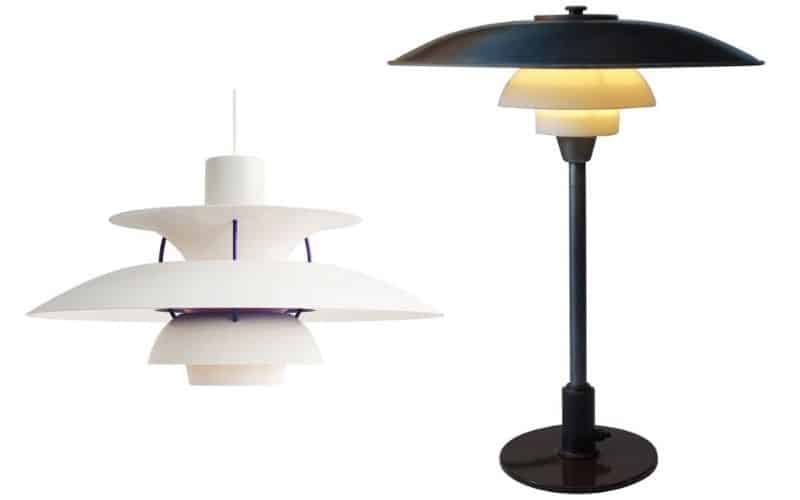
Poul Henningsen’s lamp designs.
Arne Jacobsen was a graduate of the Royal Danish Academy of the Arts in the 1920’s. He was a masterful architect and furniture designer. A few of his furniture designs have become wildly popular and enduringly recognizable. Pieces like his “Egg Chair”, the “Swan”, and the “Series 7 Chair” have become nearly synonymous with retro, mid-century modern design.

Arne Jacobsen’s “Egg”, “Series 7”, and “Swan” chairs.
Verner Panton is another well known name in Danish modern design. He briefly worked with Arne Jacobsen upon his graduation from the Royal Academy. He is known for his bold, colorful, and imaginative collections of furniture lamps and textiles. His use of bright colors and playful shapes is well known. He is perhaps most well known for the “Panton Chair”, the first one-piece molded plastic chair in the world. This piece was the beginning of the transition into a new era of design.
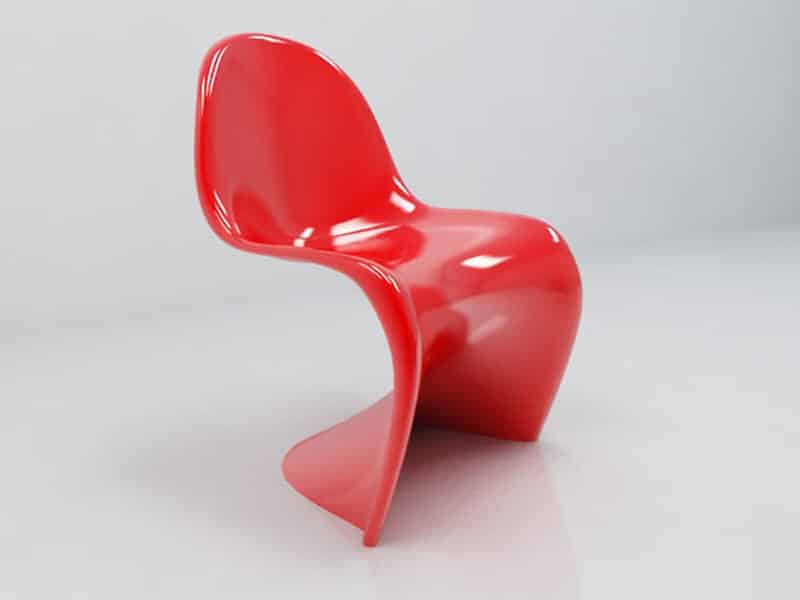
The “Panton Chair”.
Danish modern design is beautiful and absolutely iconic. While these are just a few of the big names associated with the style, there were so many designers who contributed so much to the movement.
Many of the designs we see in furniture, lighting, and homewares today borrow inspiration in some way from Danish modern design. It was iconic when it began and it is still iconic to this day.
This interior design blog about Danish modern furniture design was published by Nazmiyal Antique Rugs.

